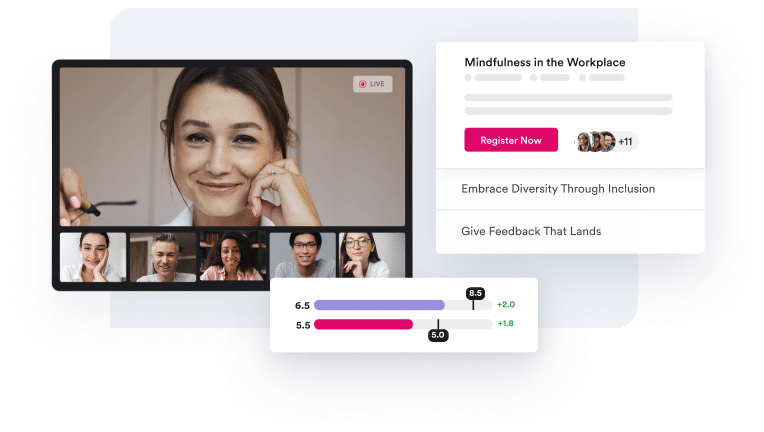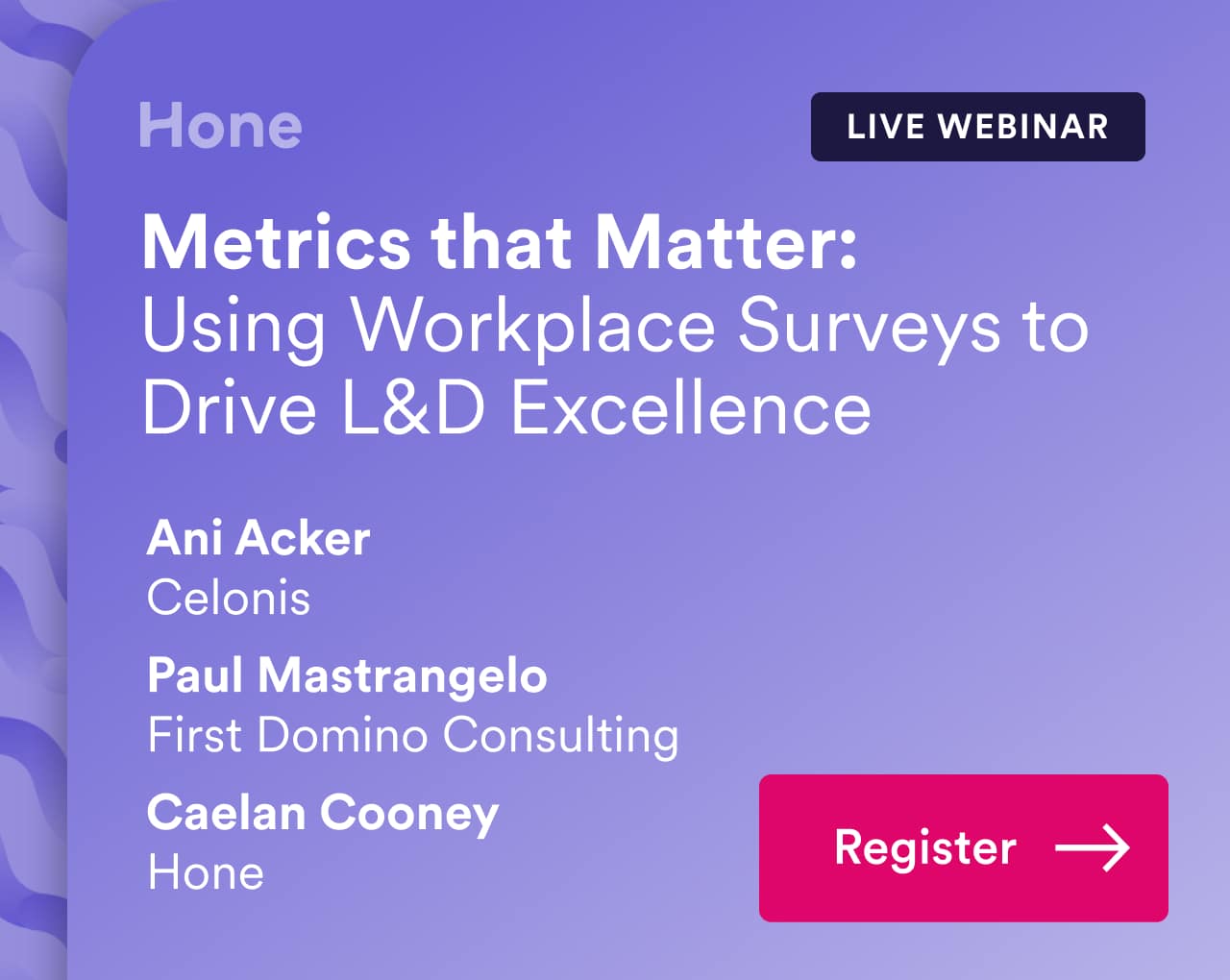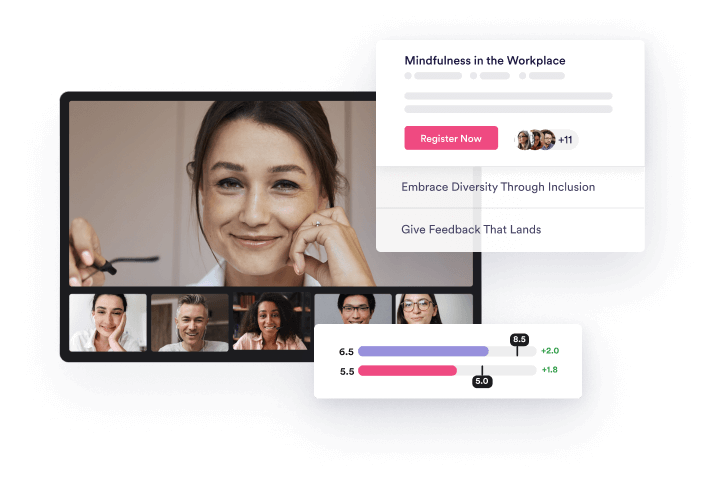Over the past 15 years, companies have started to release statements around how they’re working to address and improve diversity, equity, and inclusion (DEI) within their workplaces and within the larger global community. These words are woven into their mission statements, affirmed in public discourse, and often championed by committees focused on DEI in the workplace. Although these types of statements are certainly a positive step toward addressing racism and inequality in the workplace, words alone are not enough to drive change.
In order to truly manage change and improve DEI in the modern workplace, companies need to go further. They must actively invest in the recruitment, retention, and upward mobility of diverse talent in order to amplify diverse voices and talent within their organizations.
Viewed through this lens, statements made around DEIB are often empty, and the numbers don’t lie. For example, in 2020, among all Fortune 500 companies, you could count the number of black CEOs on one hand: four. In some cases, when companies do succeed in hiring for diversity, they then find that their diverse employees struggle to thrive in a work system that unconsciously favors racist processes and policies. In many cases, they end up leaving such companies, making it even harder to retain and prioritize the upward mobility of diverse individuals.

It’s not just diverse talent that suffers from these factors that can keep deserving individuals from getting promoted and climbing the corporate ladder. The company then loses out on having diverse voices and perspectives in positions of influence. That’s why transforming the workplace has to be about more than just the diversity of entry-level employees.
Businesses must focus on building programs and initiatives that improve the employee experience for every worker. And to do so, companies must amplify diverse voices and invest in the upward mobility of diverse employees. If you are looking to create meaningful change within every level of your organization, here’s how:
Employee Resource Groups
Employee resource groups (ERGs) are a fantastic way to bring like-minded individuals together. These employee-led groups can provide a safe space for like-minded individuals to come together and discuss their experiences and challenges in both life and the workplace. They can help amplify minority voices by sharing workplace issues with a company’s executive team, help identify potential new policies that could improve their employee experience, and drive change within their organization.

But sometimes, this work can unfairly add up. When ERGs are also tasked with building and executing DEIB initiatives for their companies, this additional burden can actually further marginalize an already marginalized group. ERG members volunteer their time to host events, lead discussions, mentor colleagues, and more — all on top of their already demanding jobs. In almost all cases, they’re doing all of that extra work for free – extra work that could become a barrier to exceeding expectations within their current role and negatively impact their eligibility for a promotion during the next performance cycle. Remember that your ERG members are volunteers and should receive credit or even compensation for the important work that they are doing.
Still, these groups can help amplify minority voices when done right. The addition of an executive sponsor can also help improve the effectiveness of these groups as well. The executive sponsor can ensure the ERG member’s concerns are voiced directly to the C-suite and advocate for change on their behalf, ensuring that employee concerns are heard and addressed within the highest levels of an organization.
Cross-functional D&I Teams
Another approach to amplifying minority voices is to create a cross-functional team — or working group — with representation from people leaders of color and influential employees from all areas of your organization. This team might operate in addition to the foundational diversity and inclusion work your company needs to do in order to infuse these principles into your recruiting, employee development, and retention practices.
Because being a part of this cross-functional group is an explicit part of their jobs, these employees can and should be compensated for their participation. This formalizes the role of people of color leading this sort of work and allows them to get compensated for their efforts.

Having employees from all levels and parts of the organization can also help you gain a more inclusive view of the employee experience at your company and address how employees might react or oppose certain initiatives or programs the team suggests. That way, when your HR team is ready to launch new initiatives, you can ensure they’ll be met with the least opposition possible.
 Finally, make sure these teams have the power, resources, and budget to make decisions and drive change within the organization. Too often these types of task forces are ineffective at driving real change because they lack the support or internal political capital to make a difference.
Finally, make sure these teams have the power, resources, and budget to make decisions and drive change within the organization. Too often these types of task forces are ineffective at driving real change because they lack the support or internal political capital to make a difference.
Investing in Middle Management
It may surprise you to find out that the people who can make the most notable difference in DEI program effectiveness are not C-suite executives, but middle management. While the CEO sets the vision and high-level goals of the organization, those goals aren’t executed without the help of middle management running the day-to-day. Since middle management drives results, they have the power, resources, and influence to call out injustice, advocate for their direct reports, and build a work environment where every employee feels respected and valued.
As the saying goes, “People leave managers, not companies,” and managers set the behavioral tone for the entire team. If they’re contributing to micro-aggressions, leading with bias, or perpetuating unfairness, employees will get fed up and leave. Or, if a manager allows harmful and disruptive behavior on their team to continue, it sends a message to employees that they don’t care. Good managers need to advocate for every one of their employees and speak out against injustice wherever they see it.
This can happen naturally when you have more diverse talent at every level of the organization. These leaders are often more in tune with the issues and challenges facing minorities in the workplace and can have the influence to change workplace culture and behavior.
“We need leadership teams composed of the most marginalized people in the workplace,” urged Karen Fleishman, founder and workshop leader of Racy Conversations, a workshop facilitation company. “Change is not going to come from white leadership pushing down an anti-racist agenda. It has to come from people who are the most impacted people. They are the closest to the problem and therefore closest to the solution.”

While getting diverse talent at all levels of the organization takes time, one thing businesses can do today to make their current business more aware of the unfairness facing diverse talent is by properly training managers. Middle managers make all the difference in shaping the employee experience, yet are often left out of leadership training. All people managers should be required to complete rigorous training courses on how to create a culture of inclusion, address bias and microaggressions on their team,  deliver compassionate and corrective feedback, and cultivate behaviors of belonging on their team.
deliver compassionate and corrective feedback, and cultivate behaviors of belonging on their team.
“If you touch a person as a part of your role, it is mandatory that you not only go through training, but that you are also amplifying the voices and the representation of people of color,” stated Dominique Hollins, a Hone facilitator, business operations leader, and DEI expert.
Middle managers should also be held accountable to ensure they’re amplifying the voices and the representation of people of color. People managers can meet individually with the most marginalized people on their team and say, “Your experience here is extremely important to me. What can I do to support you? Are there any problems that I should be aware of?” By being vulnerable and candid, the manager communicates that they are looking out for their employees, willing to stand up on their behalf and work to build a safe workplace environment. When employees feel seen, heard, and valued at an organization, they are more likely to stick around and develop their career with your business.
—
Looking to invest in manager training? Hone can help. Our live, online training programs allow your employees to learn and practice the skills they need to lead successful teams in the modern workplace. From sharing constructive feedback that lands to embracing diversity with inclusion, our extensive class list has something for both new and seasoned managers.
Try Hone for yourself with a free trial and get access to all of our classes for 14-days. If you like what you see, we offer both individual and corporate memberships, so both you and your team can stay up-to-date on DEI topics and more in the workplace.








